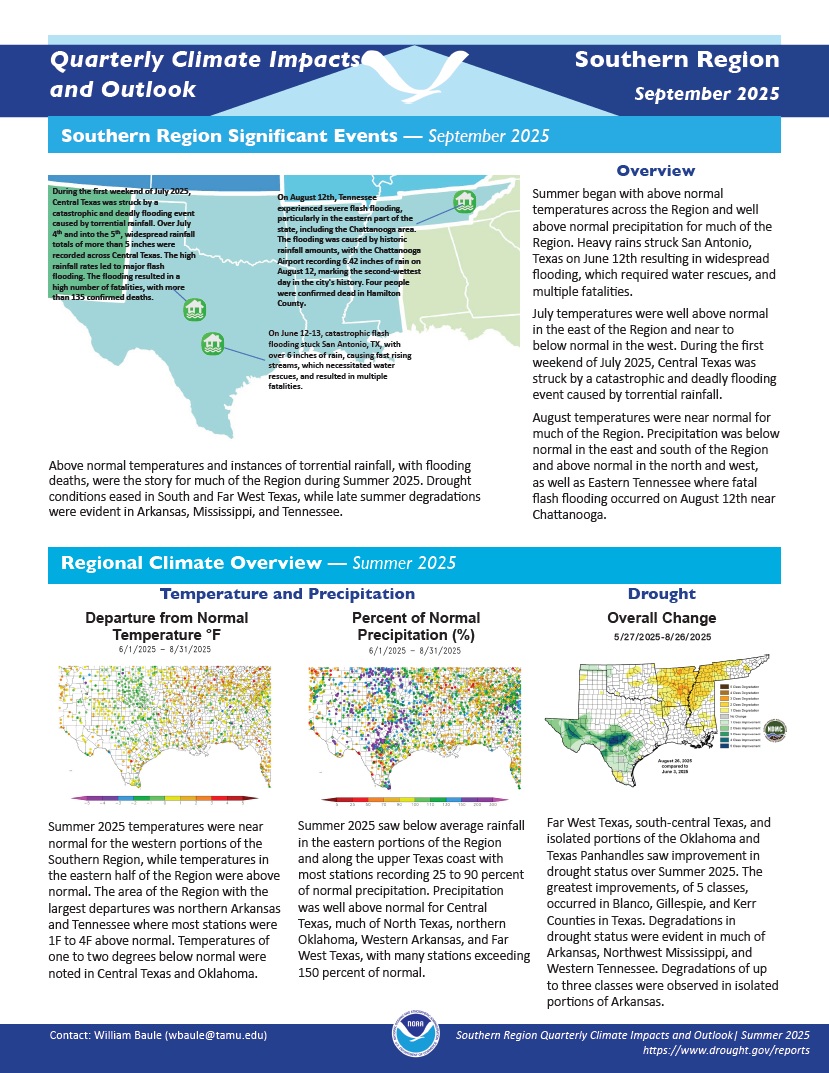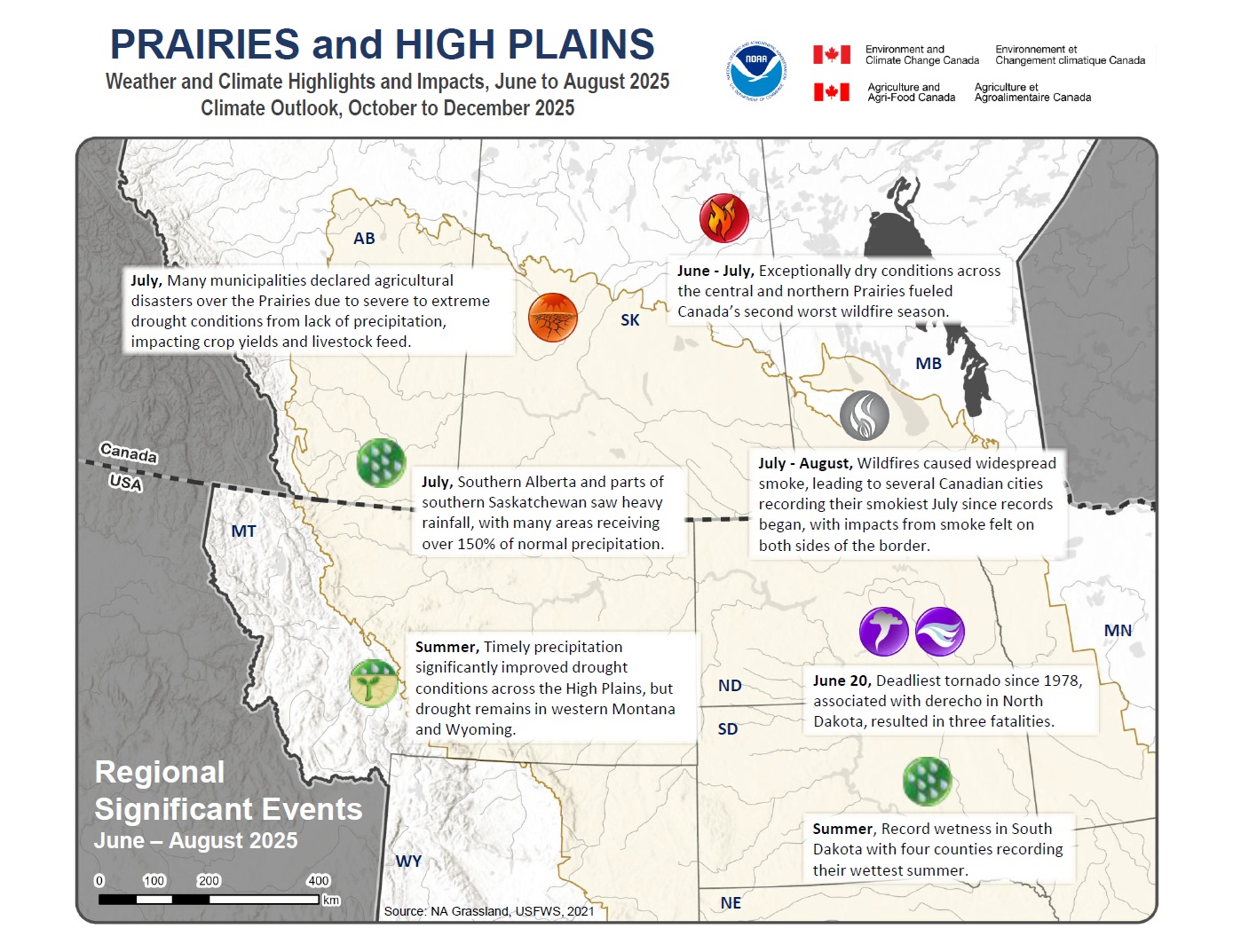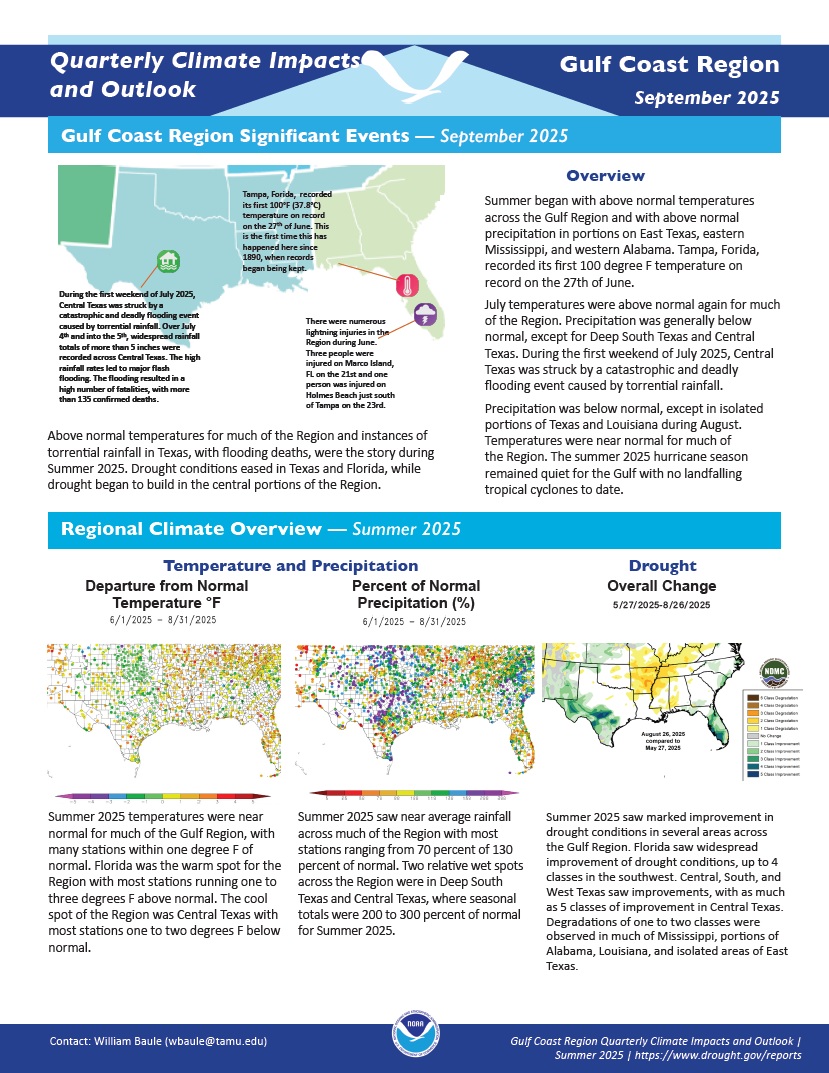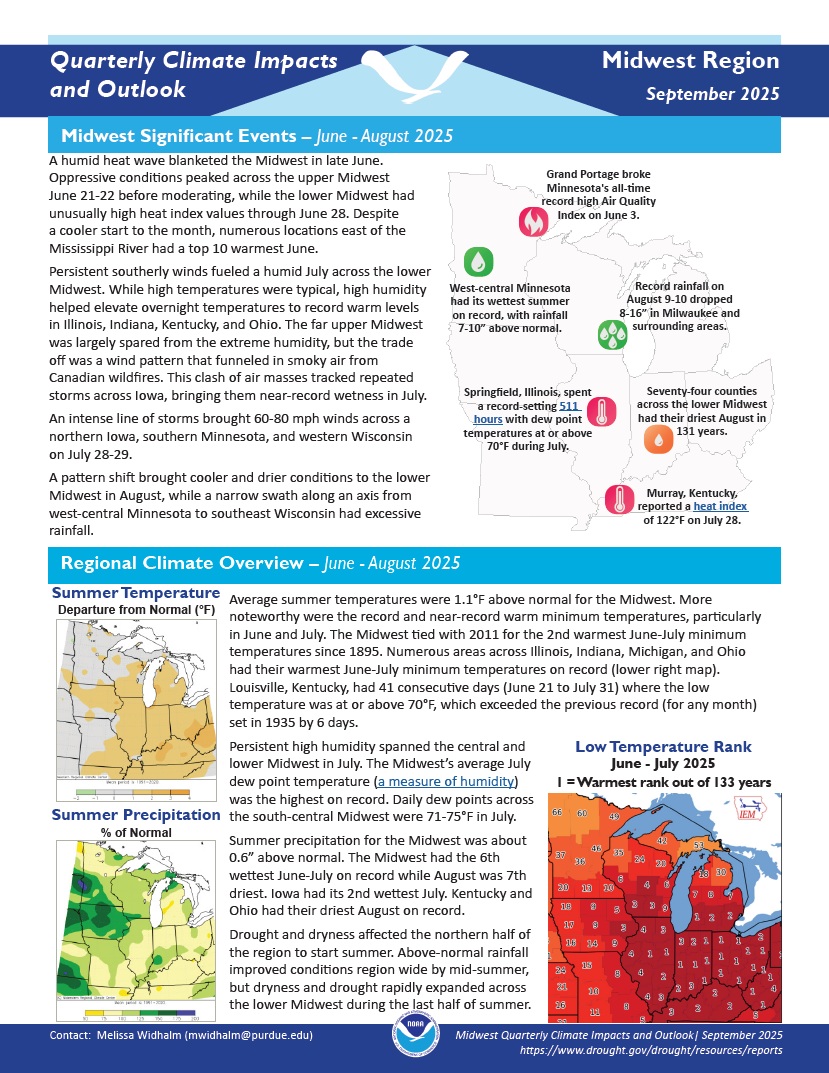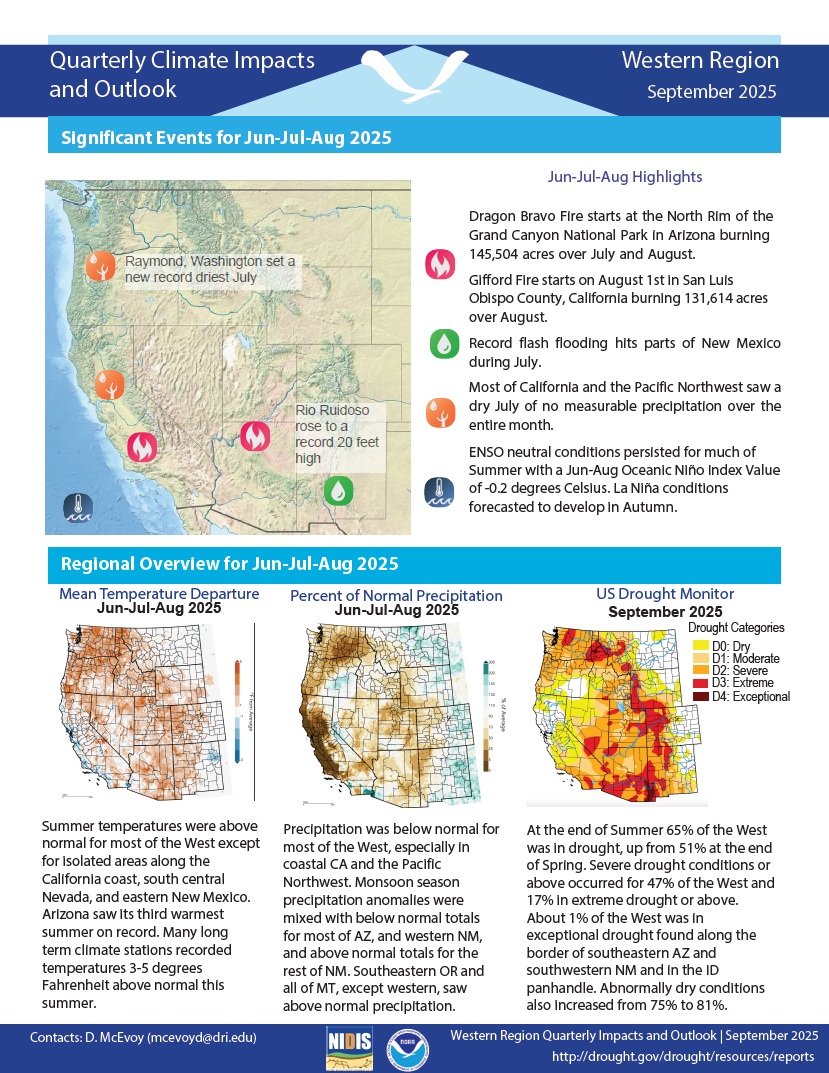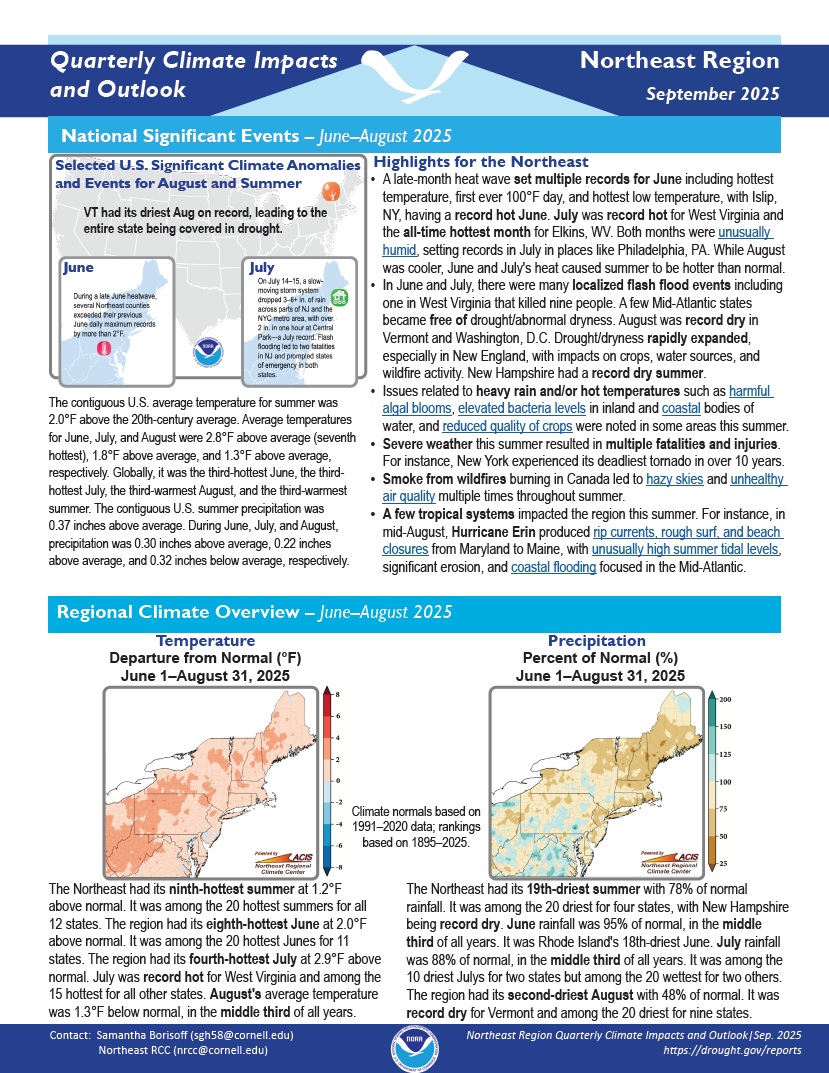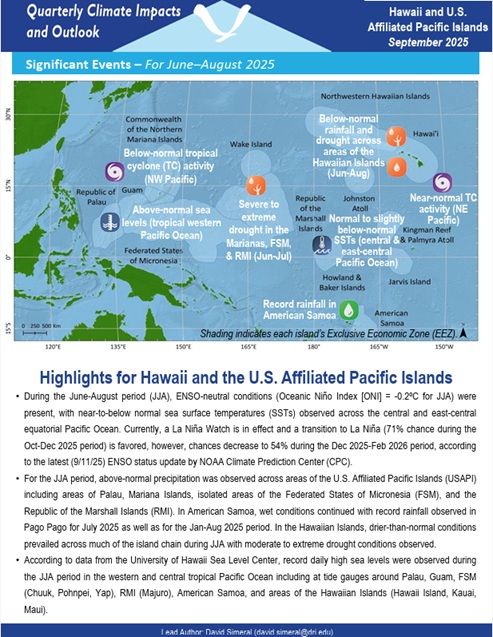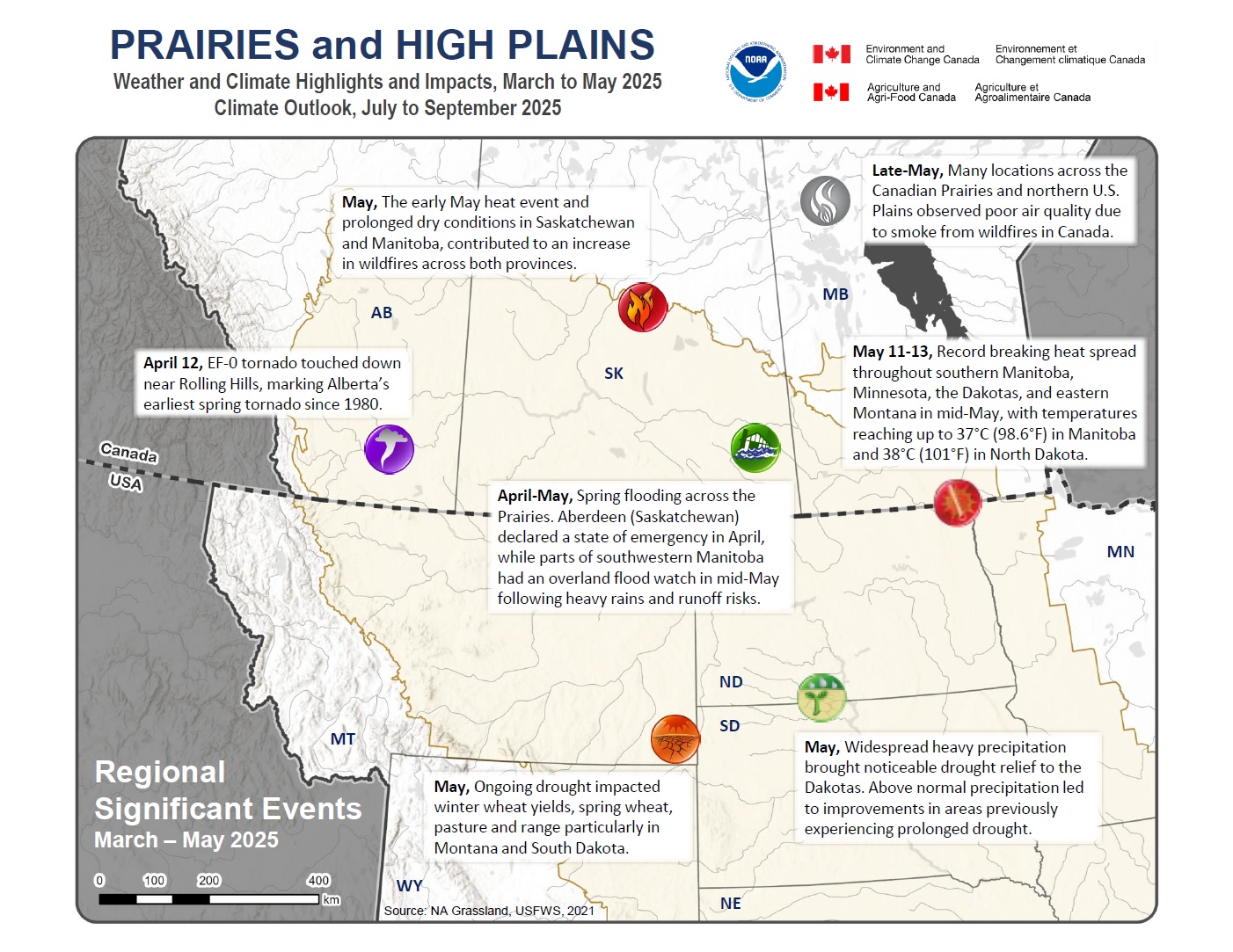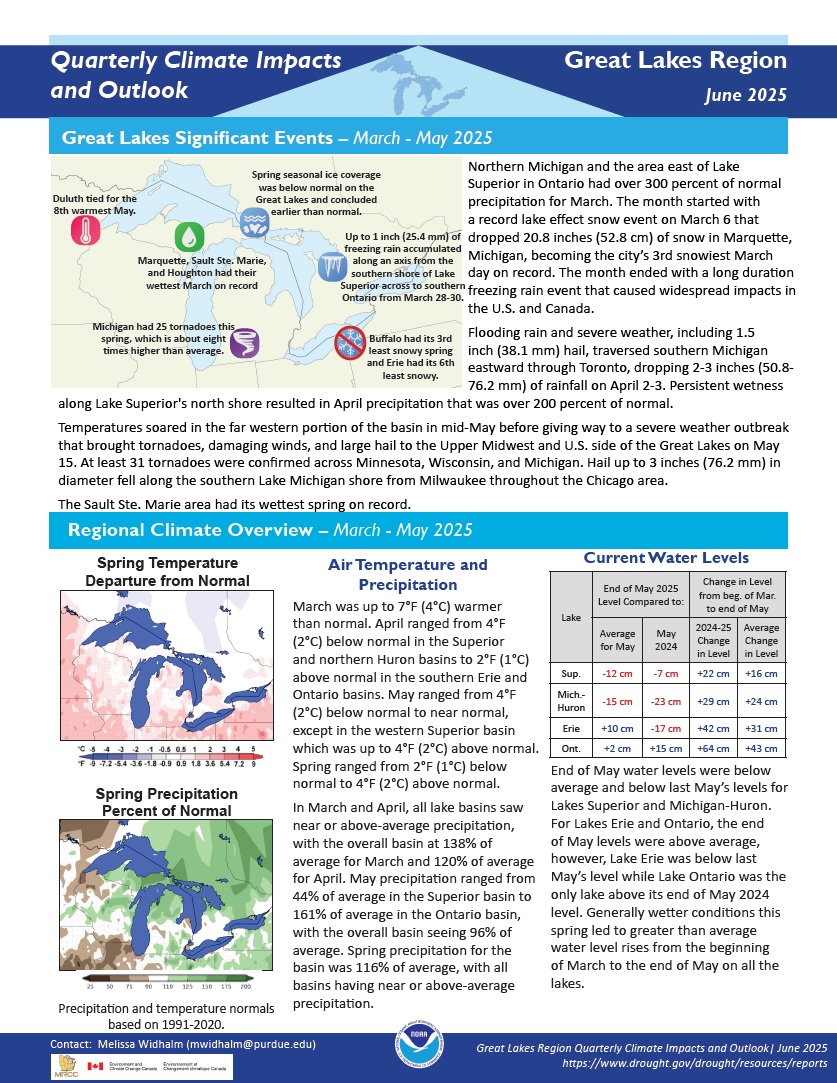For the latest forecasts and critical weather information, visit weather.gov.
Quarterly Climate Impacts and Outlook for the Southern Region for June–August 2025. Dated September 2025.
Summer 2025 temperatures were near normal for the western portions of the Southern Region, while temperatures in the eastern half of the Region were above normal. Summer 2025 saw below average rainfall in the eastern portions of the Region and along the upper Texas coast. Precipitation was well above normal for Central Texas, much of North Texas, northern Oklahoma, Western Arkansas, and Far West Texas.
Quarterly Climate Impacts and Outlook for the Canadian and U.S. Prairies and High Plains for June–August 2025, with an outlook for October–December 2025. Dated September 2025.
Summer brought mostly near normal temperatures across the Prairies and High Plains, with a small pocket of cooler conditions in the southern parts of North Dakota and slightly warmer along the southeastern High Plains. The Prairies and High Plains saw varied precipitation over the region, with some areas observing much wetter than normal conditions, while others remain near normal or very dry.
Quarterly Climate Impacts and Outlook for the Gulf Coast Region for June–August 2025. Dated September 2025.
Summer 2025 temperatures were near normal for much of the Gulf Region, with many stations within one degree F of normal. Summer 2025 saw near average rainfall across much of the Region with most stations ranging from 70 percent of 130 percent of normal.
Quarterly Climate Impacts and Outlook for the Midwest Region for June–August 2025. Dated September 2025.
Average summer temperatures were 1.1°F above normal for the Midwest. More noteworthy were the record and near-record warm minimum temperatures, particularly in June and July. Drought and dryness affected the northern half of the region to start summer. Above-normal rainfall improved conditions region-wide by mid-summer, but dryness and drought rapidly expanded across the lower Midwest during the last half of summer.
Quarterly Climate Impacts and Outlook for the Western Region for June–August 2025. Dated September 2025.
Summer temperatures were above normal for most of the West except for isolated areas along the California coast, south central Nevada, and eastern New Mexico. Precipitation was below normal for most of the West, especially in coastal California and the Pacific Northwest. Monsoon season precipitation anomalies were mixed with below-normal totals for most of Arizona and western New Mexico, and above-normal totals for the rest of New Mexico.
Quarterly Climate Impacts and Outlook for the Northeast Region for June–August 2025. Dated September 2025.
The Northeast had its ninth-hottest summer at 1.2°F above normal. The Northeast had its 19th-driest summer with 78% of normal rainfall. It was among the 20 driest for four states, with New Hampshire being record dry.
Quarterly Climate Impacts and Outlook for the Pacific Region for June–August 2025. Dated September 2025.
Quarterly Climate Impacts and Outlook for the Canadian and U.S. Prairies and High Plains for March–May 2025, with an outlook for July–September 2025. Dated June 2025.
Spring brought above-normal temperatures across the Prairies and High Plains, especially in the western Canadian Prairies, and portions of Montana, the Dakotas and Minnesota. The Prairies and High Plains saw drier-than-normal conditions overall, with the Canadian Prairies, particularly in Manitoba, Saskatchewan, southern Alberta, and much of Montana experiencing precipitation well below normal for the season.
Quarterly Climate Impacts and Outlook for the Missouri River Basin for March–May 2025. Dated June 2025.
Spring began on a warm note, with dozens of counties in Kansas, Nebraska, and South Dakota ranking in the top 5 warmest. Precipitation was above normal in the western parts of the Dakotas this spring due to abundant rainfall in the latter half of May.
Quarterly Climate Impacts and Outlook for the Great Lakes Region for March–May 2025. Dated June 2025.
Spring temperatures ranged from 2°F (1°C) below normal to 4°F (2°C) above normal. Spring precipitation for the basin was 116% of average, with all basins having near or above-average precipitation.


